
© Railway Wonders of the World 2012-

| Advertisements |
| Articles by Cecil J Allen |
| Binding |
| Cookie Policy |
| Covers |
| Donate |
| FAQs |
| Illustrations |
| More on Railway Wonders |
| Other Series |
| Privacy & Terms of Use |
| List of Illustrations |
| Locomotive Illustrations |
| Carriage Illustrations |
| Wagon Illustrations |
| Part 1 |
| Part 2 |
| Part 3 |
| Part 4 |
| Part 5 |
| Part 6 |
| Part 7 |
| Part 8 |
| Part 9 |
| Part 10 |
| Part 11 |
| Part 12 |
| Part 13 |
| Part 14 |
| Part 15 |
| Part 16 |
| Part 17 |
| Part 18 |
| Part 19 |
| Part 20 |
| Part 21 |
| Part 22 |
| Part 23 |
| Part 24 |
| Editorial - Part 1 |
| Editorial - Part 2 |
| Editorial - Part 3 |
| Editorial - Part 4 |
| Editorial - Part 5 |
| Editorial - Part 6 |
| Editorial - Part 7 |
| Editorial - Part 8 |
| Editorial - Part 9 |
| Editorial - Part 10 |
| Editorial - Part 11 |
| Editorial - Part 12 |
| Editorial - Part 13 |
| Editorial - Part 14 |
| Editorial - Part 15 |
| Editorial - Part 16 |
| Editorial - Part 17 |
| Editorial - Part 18 |
| Editorial - Part 19 |
| Editorial - Part 20 |
| Editorial - Part 21 |
| Editorial - Part 22 |
| Editorial - Part 23 |
| Editorial - Part 24 |
| Part 25 |
| Part 26 |
| Part 27 |
| Part 28 |
| Part 29 |
| Part 30 |
| Part 31 |
| Part 32 |
| Part 33 |
| Part 34 |
| Part 35 |
| Part 36 |
| Part 37 |
| Part 38 |
| Part 39 |
| Part 40 |
| Part 41 |
| Part 42 |
| Part 43 |
| Part 44 |
| Part 45 |
| Part 46 |
| Part 47 |
| Part 48 |
| Part 49 |
| Part 50 |

Railways in Art
Railway Paintings
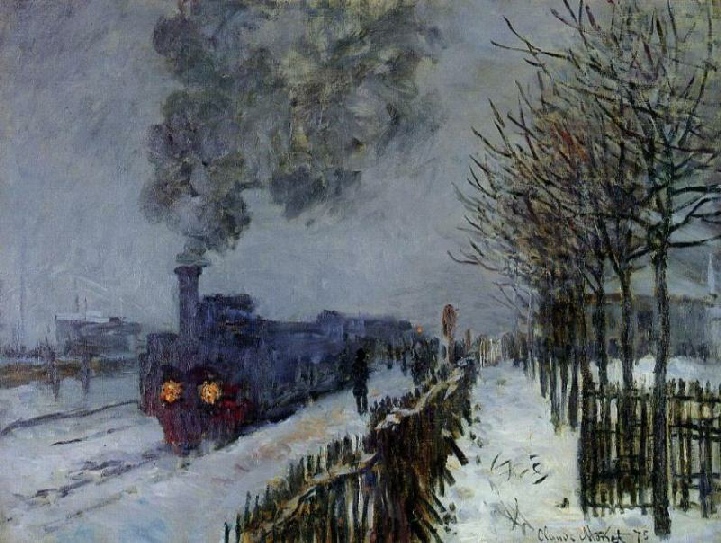
Monet’s “Le Train dans la Neige” of 1875
THERE has always been something special in the magic which the railway scene has so potently distilled. No other product of the worldwide industrial revolution has so successfully caught the minds of men at all ages, and the entry of an express train into the landscape never fails to hold the stage until it disappears along its steel-
The steam engine was known as a means of locomotion over one and a half centuries ago, and so far, of all man’s mechanical inventions, it has been the greatest mover of the emotions to appear on the scene. One of our foremost authors on the subject of railway and engineering history, L. T. C. Rolt, has suggested that, for the Romantic, the speed and power of the steam train epitomises the freedom and romance of travel -
In the early days of railways not only did the very power of the locomotive seem an almost dreadful thing, but there was also the feeling that the machines were almost part of the elements themselves. Turner, who was certainly one of our more famous artists of the first half of the nineteenth century, must have felt this strongly, for his painting of a Great Western broad-
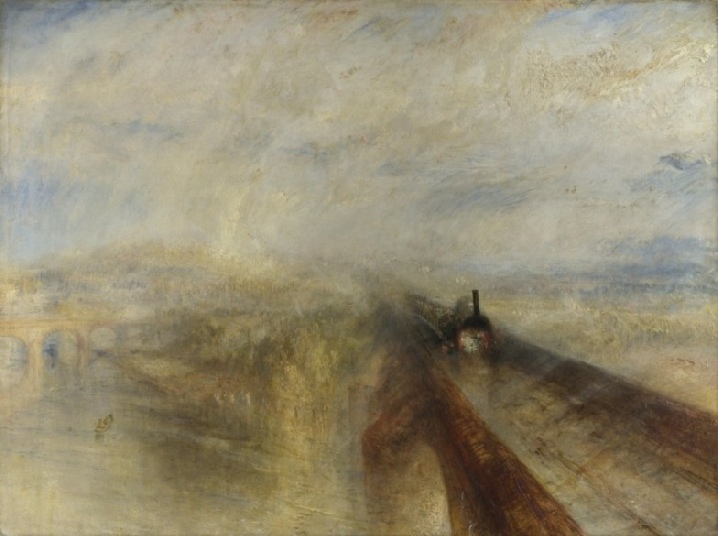
A Great Western broad-
Other nineteenth-
Although the railway has always appealed to the general artist, the past seventy-
The magazine was originated by one F. Moore, who also published a series of locomotive photographs. By 1897 Mr Moore was advertising “the handsomest pictures of locomotives and railway trains ever produced -
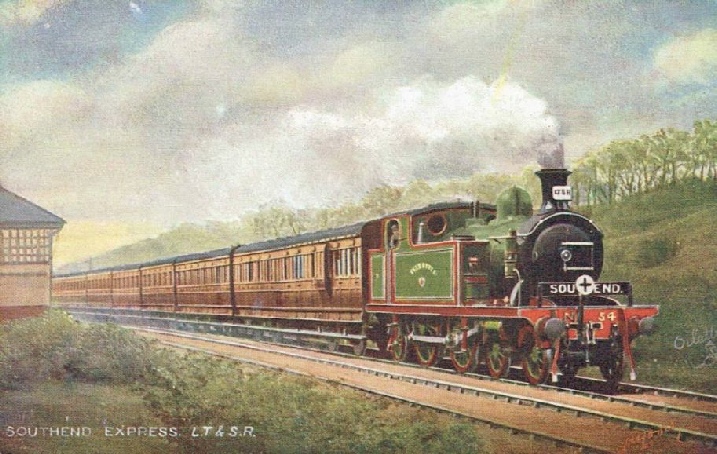
Above and below: Two examples of F. Moore’s paintings reproduced as commercial postcards. Above is a Southend express of the London Tilbury & Southend Railway; whilst below is a Newcastle to Liverpool express of the North Eastern Railway.
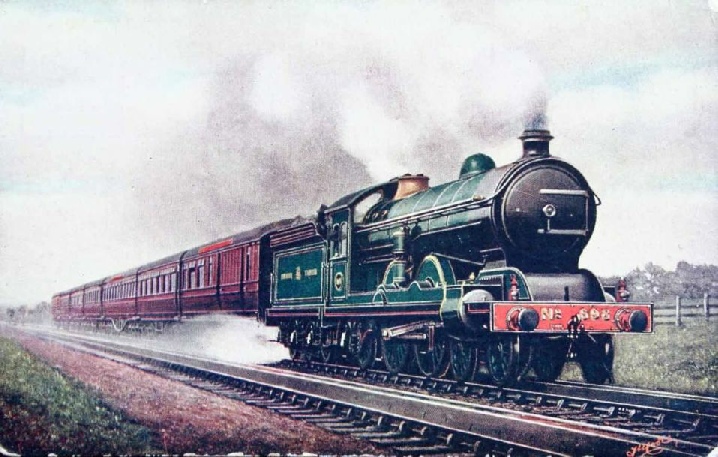
Moore had the railway market pretty well to himself until the inter-
But it has been the post-
Bridges over water seem to have appealed to Cuneo for, in addition to the Royal Border painting, he has also worked on pictures of the Saltash, Tay and Forth structures. The last-
Terence Cuneo has since painted many railway subjects ranging from the tiny restored Talyllyn Railway in Wales to huge 3 ft 6-
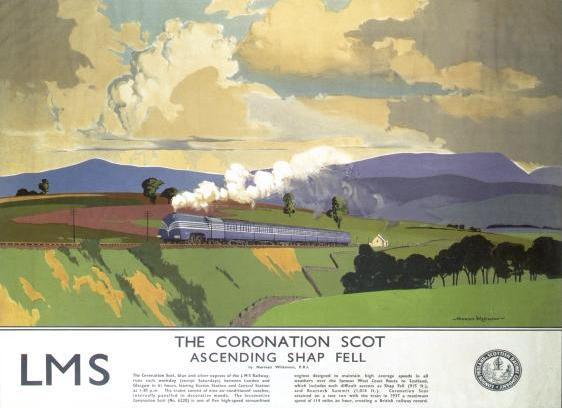
One of Norman Wilkinson’s travel posters produced in 1937 for the London, Midland & Scottish Railway to promote rail travel between London and Glasgow. It shows the “Coronation Scot” travelling through the Cumbrian countryside.
Another well-
Both Cuneo and Shepherd have made good use of their talents in aid of preservation. Cuneo has been particularly generous to the narrow-
A visit to the Museum of British Transport at Clapham will provide a view of not only some of Norman Wilkinson’s and Terence Cuneo’s paintings, but also the work of a younger artist, David Weston, who came to railways as a subject for his brush almost at the eleventh hour of steam. His work is good and can be found on walls of the home of Sir Peter Allen, lately Chairman of Imperial Chemical Industries, and others lucky enough to have been able to commission a picture of their favourite subject. Also on Sir Peter’s walls is a unique collection of oils by that well-
Today both the Locomotive Magazine and F. Moore are gone, but the work which was so ably pioneered continues. Vic Welch has illustrated by oil paintings of locomotives, many of the magazines and books of the two major publishers of transport subjects. George Heiron, one of Britain's leading photographers of railways is also an artist of high repute, who has painted first because of his love of the subject, and then professionally; his work too has been seen regularly in books and periodicals.
So, from Turner and Cuneo, Monet and Shepherd, we have colourful, sombre, dour, and even forbidding, pictures of one of man’s more positive inventions, and all of them display that monumental quality which somehow characterised the railways in their greatest and most splendid years. It was Christian Barman who said that this quality could perhaps have come first from Vanbrugh, whose great house at Seaton Delaval might well have influenced George Stephenson in his early years at Killingworth, to be later reflected in the great porticos of Euston and Curzon Street, Birmingham. Certainly there can be little question that Vanbrugh’s architecture was best suited to the first unparalleled achievements of the railway age. Had he lived in that age, what stations he might well have given us, and what pictures they in their turn might have brought us, from those whose skill has been mingled with that great attraction which railways and the steam engine have always evoked.
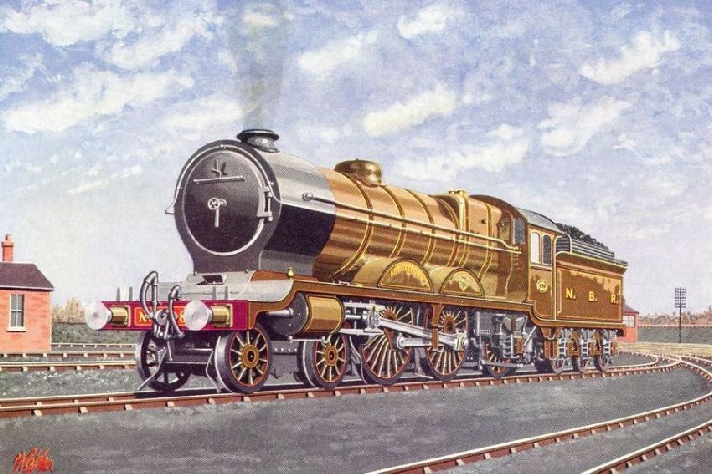
Painting by Vic Welch showing the North British Railway Atlantic type express locomotive No. 879 “Abbotsford” built in 1906 by the North British Locomotive Company.
You can read more on “Early Railway Paintings”, “Railways and Postage Stamps” and “Railways and Publicity” on this website.